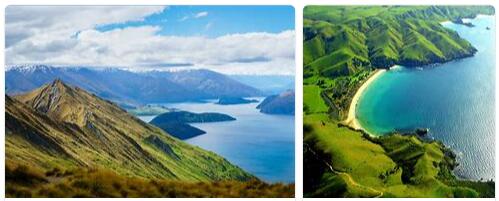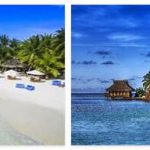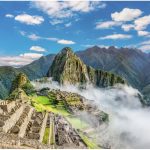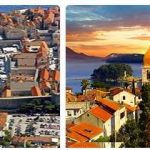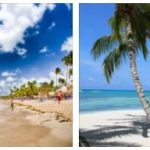Travel to New Zealand
New Zealand is located just opposite Sweden on the other side of the globe. In fact, the distance can not be greater. The country has long been called by many globetrotters the most beautiful country in the world. On the North Island there are palm-fringed beaches, subtropical vegetation, volcanoes, steaming geysers and interesting memories from the indigenous people – the Maori. The south island is characterized by a dramatic mountain landscape with snow-capped peaks, deep fjords and glaciers that open into rainforest.
See New Zealand Travel
Population: 4.4 million
Capital: Wellington
Language: English
there are no snakes living freely in the wild in New Zealand?
there was no alcohol in New Zealand before it was introduced by Europeans? The Maori called alcohol ‘wai piro’ (stinking water) and did not adopt alcoholic beverages until many years later.
Geography of New Zealand
New Zealand was formed by volcanic activity, and especially on the North Island there are still many volcanoes – some are extinct, others are still active. Auckland, New Zealand’s largest city with 1.5 million inhabitants, spreads over an area that contains 60 extinct volcanoes. Elsewhere on the North Island, you can experience how the volcanic subsoil is still active, how the smell of sulfur rises from the ground and how it bubbles in the lakes of the boiling water. The North Island is one of New Zealand’s two large islands which, together with a number of smaller islands in the Pacific Ocean (including Stewart Island and Chatham), is the country named after the Dutch province of Zealand.
New Zealand attractions
From the northern tip of the North Island to the southern part of the South Island, it is 1,600 km, and you do not have to drive more than a couple of hours north from Auckland to be able to spice up your holiday with great nature experiences. Here are 144 islands in the Bay of Islands where you will find some of New Zealand’s best dive sites, and where you have the chance to swim side by side with dolphins. Other good dive sites can be found outside Matapouri on Poor Knights Island – according to the legendary Jacques Cousteau, it would actually be one of the world’s ten best places for those who want to explore the underwater world. Further up the coast is the world’s longest beach of over 90 miles – Ninety Mile Beach. A popular place to surf. If you want more adrenaline kicks, Queenstown is the right place. It was here that the discipline of bungy jump was invented, and this daredevil activity is still very popular in Queenstown. Queenstown is also a great place for trekking, skiing, skydiving, paragliding, river rafting and other extreme sports. Also set aside part of the holiday for the capital Wellington where you can experience avant-garde art, hang out at one of the many cafés or watch a tough match in a rugby match when the national team called All Blacks makes the whole nation boil over.
Attractions in Auckland
The streets meander below the 328-meter-high Sky Tower – the tallest building in the southern hemisphere. The harbor is crowded with sailboats. City of Sails is usually called the city, and the name is very apt. If you want to experience Auckland from above, it should be done here – or on the two volcanoes Mount Eden and One Tree Hill, which rise 196 meters and 183 meters above sea level respectively. One Tree Hill is part of the city’s oldest park, the Auckland Domain, and the now extinct volcano is happy to lend its crater top to larger and smaller summer concerts.
New Zealand National Parks
More wild nature can be found in the national parks. Mount Cook National Park with the country’s highest mountain at 3,765 m is located in Westland on the South Island and is on the UNESCO World Heritage List. Here it is not lush and green in the same way as it usually is in New Zealand – but in return there are lots of steep cliff sides, snow-capped mountain peaks, glaciers and alpine flowers. Not far from Mount Cook National Park is Westland National Park, which together with Fiordland National Park forms the nature reserve Te Wahipounamu. Here are both snow-capped mountains, pristine sandy beaches and not least the breathtaking glaciers Fox and Franz Joseph, which disappear many kilometers down into the lowlands’ rushing rivers and lush rainforest.
Tongariro National Park, which the Maori chief Te Heuheu Tukino IV donated to the state of New Zealand in 1877, is the country’s oldest national park and is of great cultural and religious significance to the Maori who came to the country a thousand years ago. Tongario is also on the UNESCO World Heritage List and is dominated by three volcanoes, Mount Ruapehu, Mount Ngauruhoe and Mount Tongariro, which stretch 2,797, 2,291 and 1,968 meters respectively and are all active. Mount Ruapehu erupted as late as 1995, but every year from June to November the mountain slopes are used as ski slopes. The sterile volcanic landscapes were used as filming locations for the Lord of the Rings movies, just like several other places in the country.
Climate and weather New Zealand
On this page you can read about the climate and weather in New Zealand. See for example temperature and precipitation for the capital Wellington.
| JAN | FEB | MAR | APR | MAY | JUN | CHRISTMAS | AUG | SEP | OCT | NOV | DEC | |
| Auckland | ||||||||||||
| Daytime temperature | 24 | 24 | 23 | 20 | 17 | 15 | 14 | 15 | 16 | 18 | 20 | 22 |
| Night temperature | 16 | 17 | 15 | 13 | 11 | 8 | 8 | 8 | 10 | 11 | 13 | 15 |
| Precipitation (mm) | 66 | 71 | 75 | 85 | 110 | 108 | 133 | 111 | 91 | 94 | 72 | 87 |
| Christchurch | ||||||||||||
| Daytime temperature | 23 | 22 | 20 | 17 | 14 | 12 | 11 | 12 | 15 | 17 | 19 | 21 |
| Night temperature | 12 | 12 | 10 | 7 | 4 | 1 | 1 | 2 | 4 | 6 | 8 | 11 |
| Precipitation (mm) | 36 | 43 | 46 | 44 | 58 | 58 | 65 | 62 | 41 | 49 | 46 | 47 |
| Queenstown | ||||||||||||
| Daytime temperature | 22 | 22 | 19 | 15 | 12 | 8 | 8 | 10 | 13 | 15 | 18 | 20 |
| Night temperature | 10 | 9 | 7 | 4 | 2 | -1 | -2 | 0 | 2 | 4 | 6 | 8 |
| Precipitation (mm) | 64 | 48 | 53 | 56 | 70 | 72 | 49 | 69 | 67 | 66 | 68 | 76 |
| Wellington | ||||||||||||
| Daytime temperature | 21 | 21 | 20 | 17 | 15 | 13 | 12 | 13 | 15 | 16 | 18 | 20 |
| Night temperature | 15 | 15 | 14 | 12 | 10 | 8 | 7 | 7 | 9 | 10 | 11 | 14 |
| Precipitation (mm) | 58 | 61 | 67 | 68 | 86 | 101 | 113 | 93 | 75 | 95 | 75 | 65 |
According to bridgat, New Zealand is located in the southern half of the globe. This means that it is summer in New Zealand when it is winter in Sweden and vice versa. In addition, the country is close to Antarctica, which means that it can get quite cold on the islands during the winter months, despite the fact that the country is relatively close to the equator. New Zealand consists of several islands and the main islands are called the North Island and the South Island. On the South Island, the climate is mainly dominated by westerly winds that on their way from Tasmania accumulate lots of water. That’s why it rains a lot more on the South Island and this is where we find the showy greenery that the country is so famous for.
